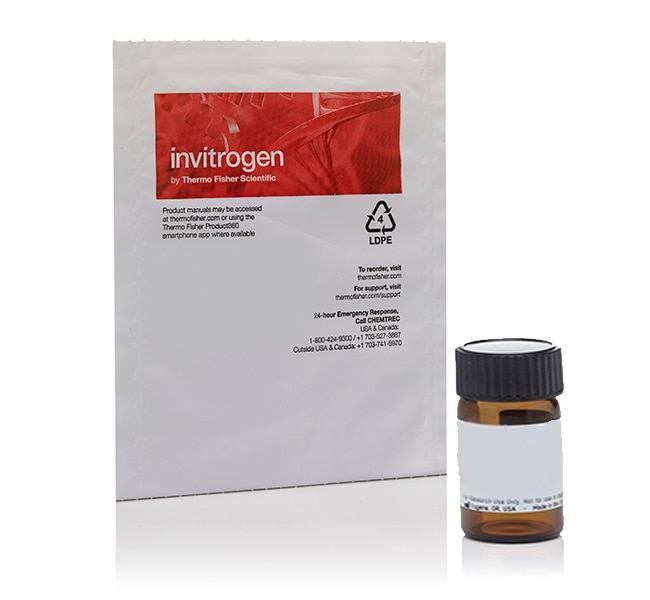Search Thermo Fisher Scientific

Carboxy-H2DCFDA (general oxidative stress indicator)
 Promotion
Promotion Promotion
Promotion| Catalog Number | Quantity |
|---|---|
C400 | 25 mg |
ROS Indicator Specifications:
• Ex/Em: ∼492–495/517–527 nm
• Product is air sensitive and should be stored under dry argon or nitrogen
• Product may be dissolved in DMSO, DMF, or ethanol for use
• Indicator is cell permeant (cell loading protocols are available in the literature)
• Fluorescence can be monitored using a flow cytometer, fluorometer, microplate reader, or fluorescence microscope, using excitation sources and filters appropriate for fluorescein
Find More ROS Indicators
We offer an assortment of Molecular Probes™ products for the generation of reactive oxygen species (ROS), including singlet oxygen, superoxide, hydroxyl radical and various peroxide and hydroperoxides, as well as for their fluorometric detection in solution. Review Generating and Detecting Reactive Oxygen Species—Section 18.2 in the Molecular Probes™ Handbook for more information on these products.
For Research Use. Not for human or animal therapeutic or diagnostic use.
Researching ferroptosis?
Learn about iron-dependent cell death & ferroptosis reagents to meet your research needs ›
Figures

Customers who viewed this item also viewed
Documents & Downloads
Certificates
Safety Data Sheets
Product Information
Frequently asked questions (FAQs)
It has been done. The problem is that plate readers are less sensitive than microscopes, with far less signal-to-background difference. It is worth trying, but first optimize concentrations and loading times with control cells, use a plate with little to no autofluorescence, and possibly optimize the gain setting in order to get the best signal possible. But don't expect the same sensitivity, even with optimization.
Find additional tips, troubleshooting help, and resources within our Cell Analysis Support Center.
This is not recommended as the two dyes overlap in the emission wavelength. There are other ROS reagents available in different wavelengths, such as CellROX Deep Red, which emits in the far-red range (665 nm), or dihydroethidium, which is emits in the visible red range (620 nm).
Find additional tips, troubleshooting help, and resources within our Cell Analysis Support Center.
If the cell is overloaded with dye, the high intracellular concentration of the dye may lead to dye-dye quenching. Upon illumination, photobleaching will occur, which will reduce the dye-dye quenching and actually increase the fluorescence (for a while, but then it will start decreasing). To solve the problem, reduce the concentration and incubation time, and try a range of incubation times and concentrations.
Find additional tips, troubleshooting help, and resources within our Cell Analysis Support Center.
H2DCFDA and similar derivatives are not fixable. The same goes for dihydroethidium and dihydrorhodamine. However, CellROX Deep Red and CellROX Green are retained for a limited time upon fixation with formaldehyde. CellROX Green may be retained upon subsequent Triton X-100 permeabilization. Avoid the use of any acetone or alcohol-based fixatives or fixatives that include alcohol, such as formalin.
Find additional tips, troubleshooting help, and resources within our Cell Analysis Support Center.

